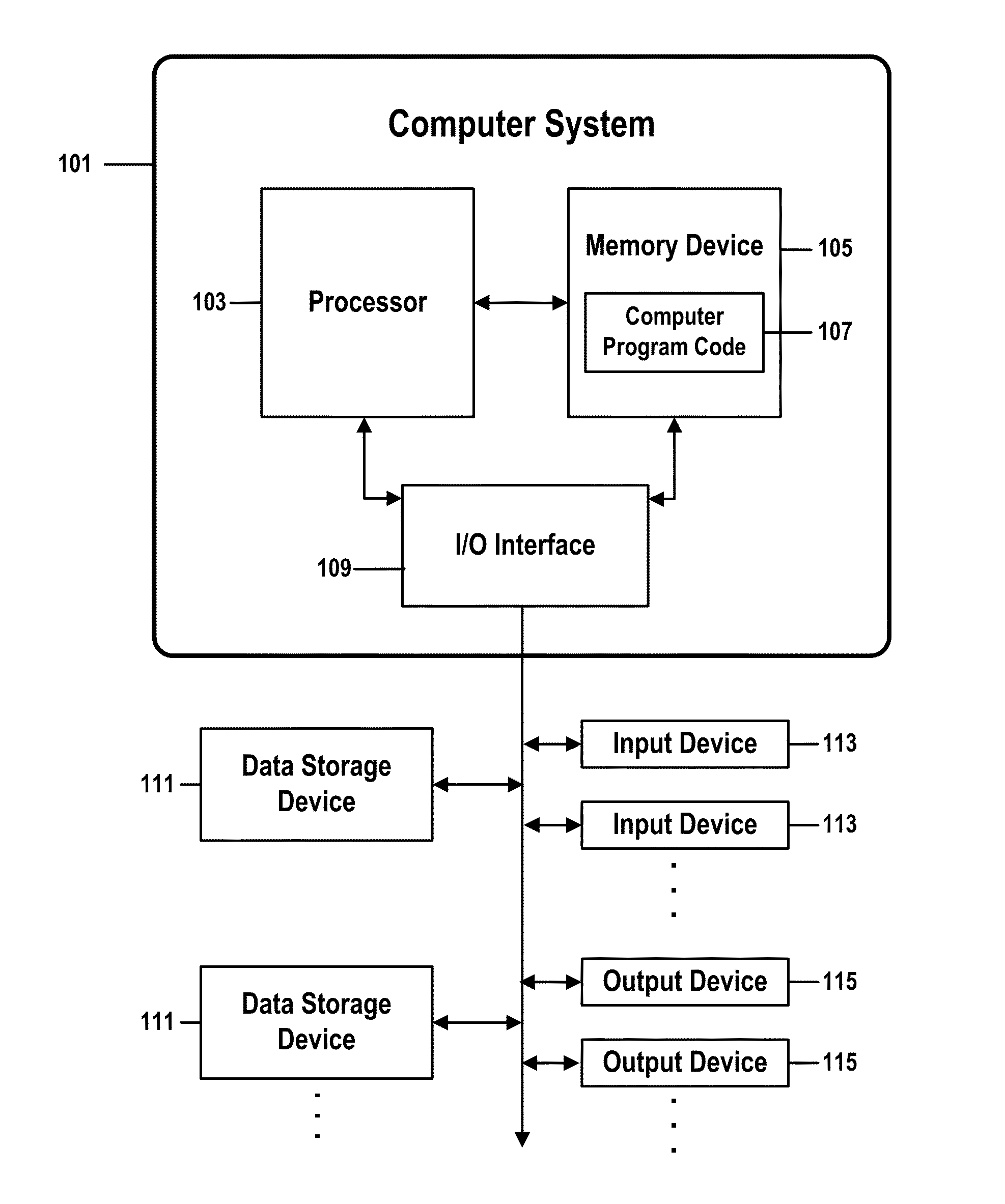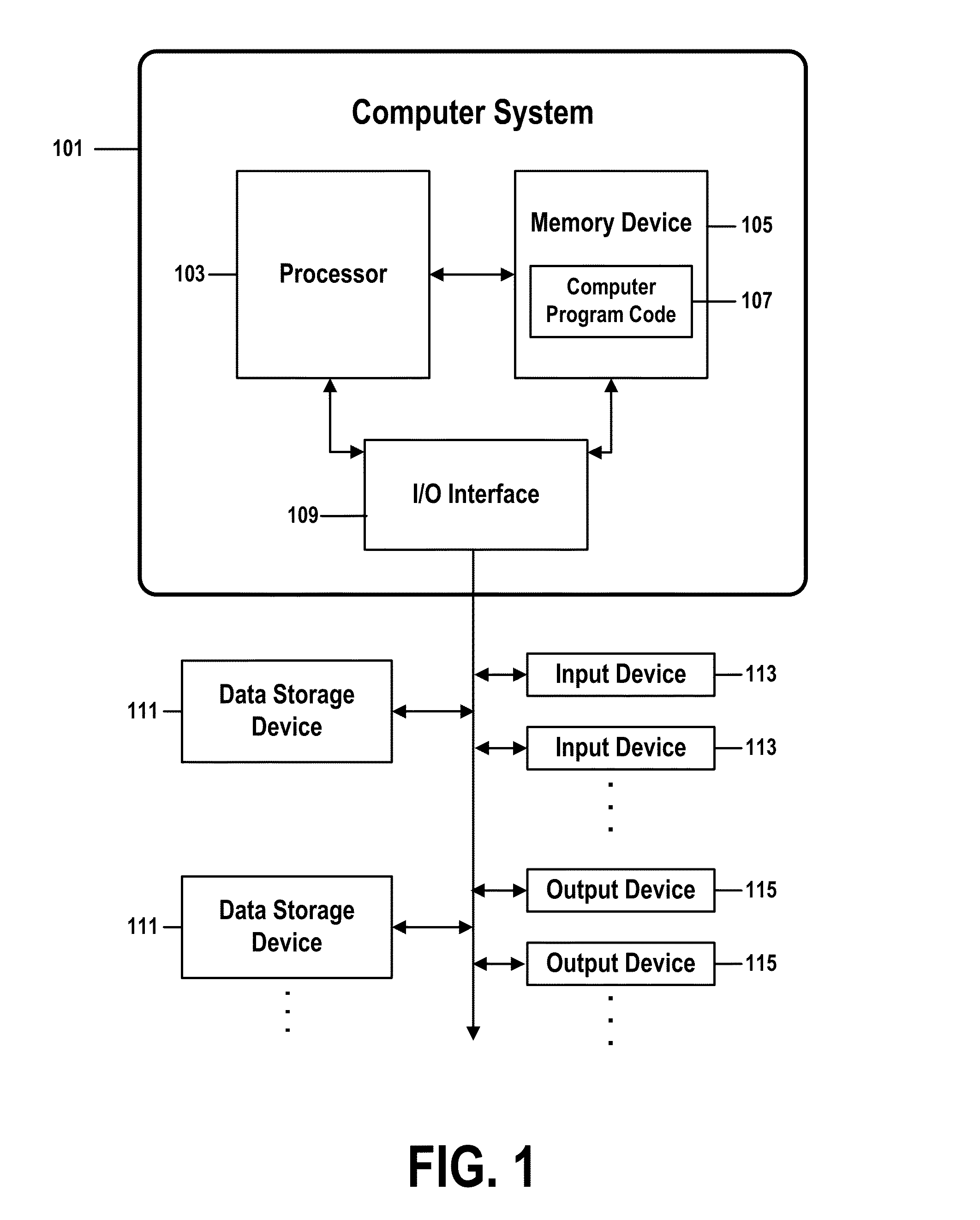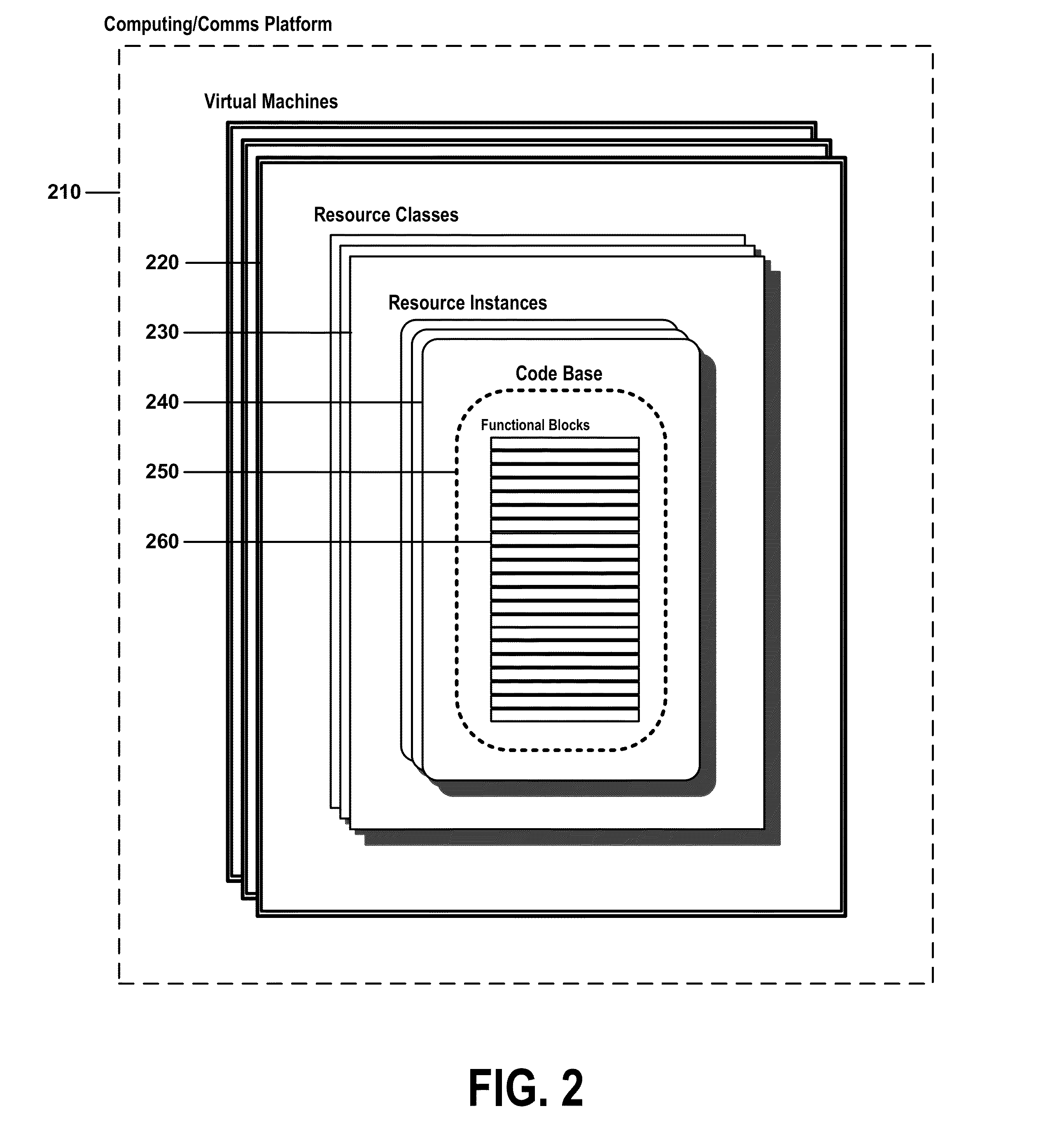Optimizing a cloud-computing environment
a cloud computing and environment technology, applied in the field of optimizing computer resources, can solve the problems that the optimization method capable of simultaneously optimizing multiple components is not able to efficiently or accurately complete the task in a reasonable amount of time, and one component may reduce the performance of another componen
- Summary
- Abstract
- Description
- Claims
- Application Information
AI Technical Summary
Benefits of technology
Problems solved by technology
Method used
Image
Examples
Embodiment Construction
[0047]A computing platform, such as an enterprise network or a virtualized cloud-computing environment, may comprise an enormous number of configurable components, and the performance of each component may be a function of numerous parameters.
[0048]Dependencies or other relationships may exist among subsets of these parameters, making it difficult to optimize performance or efficiency of such a platform by independently optimizing performance or efficiency of one or more components. In some cases, attempting to optimize performance of one component may even reduce performance of another component when those components share resources or are otherwise coupled. Optimization of an entire computing platform, or of a multi-component subsystem of a platform, may thus require a method of concurrently or iteratively optimizing parameters of multiple related components.
[0049]Embodiments of the present invention solve this problem by creating a model of a biological ecosystem that represents,...
PUM
 Login to View More
Login to View More Abstract
Description
Claims
Application Information
 Login to View More
Login to View More - R&D
- Intellectual Property
- Life Sciences
- Materials
- Tech Scout
- Unparalleled Data Quality
- Higher Quality Content
- 60% Fewer Hallucinations
Browse by: Latest US Patents, China's latest patents, Technical Efficacy Thesaurus, Application Domain, Technology Topic, Popular Technical Reports.
© 2025 PatSnap. All rights reserved.Legal|Privacy policy|Modern Slavery Act Transparency Statement|Sitemap|About US| Contact US: help@patsnap.com



